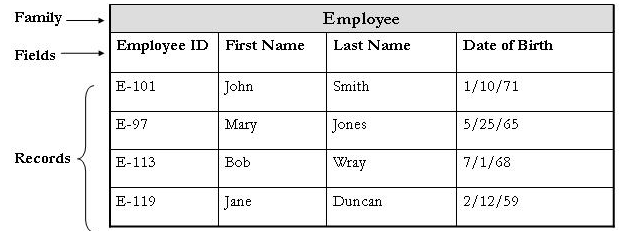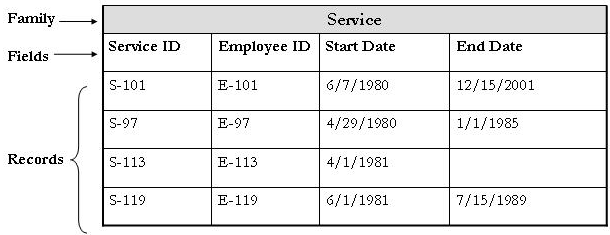
The following explanation illustrates the connection between families, records, and fields. While the example is generic, the concept applies to GE Digital APM families, family fields, and records.
Note: In this example, data spreading has not been used.
Suppose that employees will be stored in the Employee entity family. Various fields will be defined for the Employee family to create columns in the Employee table and store data for individual Employee records. The Employee family table might look something like this:

The following fields are defined for the Employee family:
Four records belong to the Employee family and are stored as rows in the Employee table. Each record has a value in each field. The first record in the table defines the information for John Smith, the second record defines the information for Mary Jones, and so on. Each record has an ID, which is unique to the record and can be used for searching.
Because each employee has a certain number of years of service to the employer, the Employee family could be related to the Service family through the Has Service relationship family. The Service family, then, could contain fields such as Start Date and End Date. The Service family table might look similar to the following table.

In the Service family example, you can see that there are four records, each assigned a specific Service ID. The Employee ID field indicates the employee with which the record is associated, the Start Date field defines the date on which the employee began service, and the End Date field indicates the date on which the employee ended his or her service. Because the End Date field is empty for the employee defined by the Employee ID E-113, we can infer that he or she is the only one who remains with the company out of the four employees defined in the table.
Copyright © 2018 General Electric Company. All rights reserved.